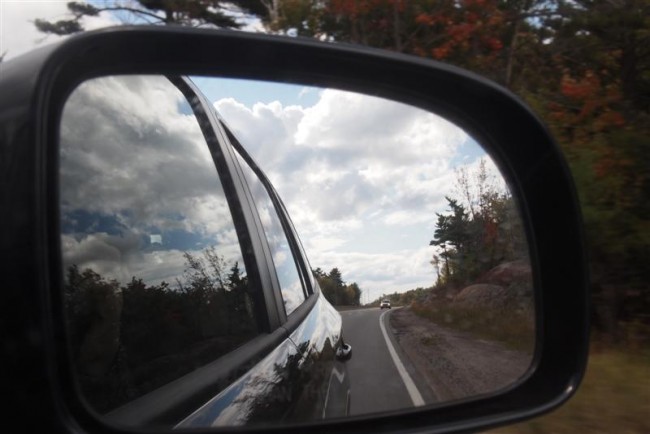Nothing beats a good old fashioned road trip, so my good friend Corbin from I BackPack Canada and I decided to track our way from Toronto through the east end of Algonquin Park to its west end. I never realized how massive Algonquin Park was (and as a result how much larger Ontario seems). The Park is 7653 square kilometres in size. Geographically, that is about one and a half times the size of Prince Edward Island or the US state of Delaware and about a quarter the size of Belgium. Phew!
We were able to cover a lot of ground and as a result, I would not recommend driving from the east to the west end of the park in one day. (Driving from the Barron Canyon in the east end of the Park to Oxtongue Lake on the west side of the park takes FOUR HOURS).
One highlight included walking the Jack Pine trail to the site where Canadian artist Tom Thomson’s Jack Pine was painted. I can see why he was so inspired to paint there. In low season, you could feel the stillness of the lake; the leaves slowly transforming to bright red and oragne; the changing of the season.
The other great thing about Algonquin Park is that the trails and lakes are closely located to one another. The hikes to lookout points are about 1.5 kilometres long, so they’re suitable for those at various levels of physical fitness. We were able to spontaneously able to hike our way along the Barron Canyon trail and get some spectacular views before the sun set.
Canoe Lake is the most popular lake of Algonquin Park and it’s known as the “Highway” in high season for good reason. We were lucky to take advantage of the disappearing crowds in low season and get a good canoe trip that day. We were generously guided by Jamie of Algonquin Outfitters and he took us to the famous spots on Canoe Lake, including those that affected Tom Thomson (whose paintings of the lakes gained him honorary membership into the Group of Seven even though the group’s inception was after his death). Thomson had drowned in Canoe Lake and there is a cairn and totem pole dedicated to Thomson on the lake as well as the cottage of his rumoured lover, Winnie Trainor. These were fun spots to mark on our Canoe Lake quest for the artist.
The early bird catches the worm or at least the fog; capturing the drama of the fog on Cache Lake was a highlight of our trip, as illustrated in the picturees. There are a few resorts on Cache Lake and if you can afford them, I highly recommend staying there as its close to other lakes.
We took a brief detour to Ragged Falls and it’s majestic beauty enables you to sit at the top of the rocks as the falls stream down from above and reflect on the incredible nature Ontario has to offer. It is worth the kilmoter hike!
The lake of Two Rivers is a vast river and has many rocks and stop off points on the side of the river if you want to canoe and picnic al fresco. We were able to witness the fall foilage surrounding us in landscape form. One morning, we took the wrong turn and were able to catch the river at sunrise. This was one moment that stood out for me, realizing that getting up in the ealry morning in Algonquin Park is absolutely worth foresaking a sleep-in or instantaenous coffee.
Other notes: The Algonquin Park Visitor’s Centre is worthy for views; has its original post office intact; is a way for you to record your animal sightings and has a restaurant on site. If you need to be technologically caughtup, there is free wi-fi at the centre so you can plug in before you get back to nature. Otherwise, wi-fi is spotty or non-existent throughout the park.
We were able to explore many parts of the park, so you can pick and choose the best parts of Algonquin Park, should you make this your next camping or canoeing destination.
A big thank you to Ontario Tourism and Algonquin Outfitters (located on Oxtongue Lake) for helping us undertake such an adventure!


